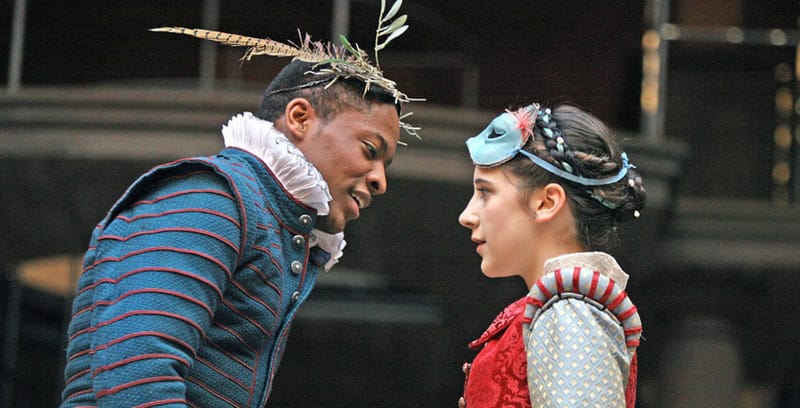Romeo & Juliet (2009) - Dominic Dromgoole

Dominic Dromgoole's production of Romeo and Juliet stays very true to the source material. It is performed in The Globe, the same script is used and the production is performed almost exactly the same. When casting for his 2009 production, Dromgoole went against the source material in casting women for the female parts instead of casting men. I guess it could also be significant that Romeo is portrayed by a young black man due to almost all productions in the past being full of white men.
Themes
- Love
- Family
- Loyalty
- Conflict
- Hatred
- Fate
- Innocence
- Death
- The Patriarchy
- Marriage
- Peace
- Power
Social Context
Having a black man as the eponymous role in such a dated theatrical production can span a much wider target audience into traditional theatre due to the opposing of the normal casting requirements of such a complex piece of theatre. Bringing back such an old piece of theatre is also interesting as many people like to see what modern twists and alterations a director can bring to Shakespeare's work.
Political Context
During the Elizabethan era there were no political cabinets or political leaders. Parliament only consisted of high clergymen and people of nobility - they were very limited. Prince Escalus was probably influenced by the law at the time; small crimes resulted in severe punishments: "All are punishe'd". Dromgoole acts upon these ideas by keeping to the traditional text and relevant to his production.
Cultural Context
When The Globe was first built it was named The Globe due to Sir Francis Drake's circumnavigation of the earth and his conclusion that the world was not flat but in fact spherical - a globe. This was a relevant topic at the time and interested people to come see Shakespeare's shows even more. Dromgoole followed this and stayed to true to the original production by setting his interpretation of Romeo and Juliet in The Globe Theatre.
Dromgoole's remake of Romeo and Juliet is one of the most successful and popular versions of the original play, being performed in The Globe and being filmed in front of a live audience and streaming across the world.



